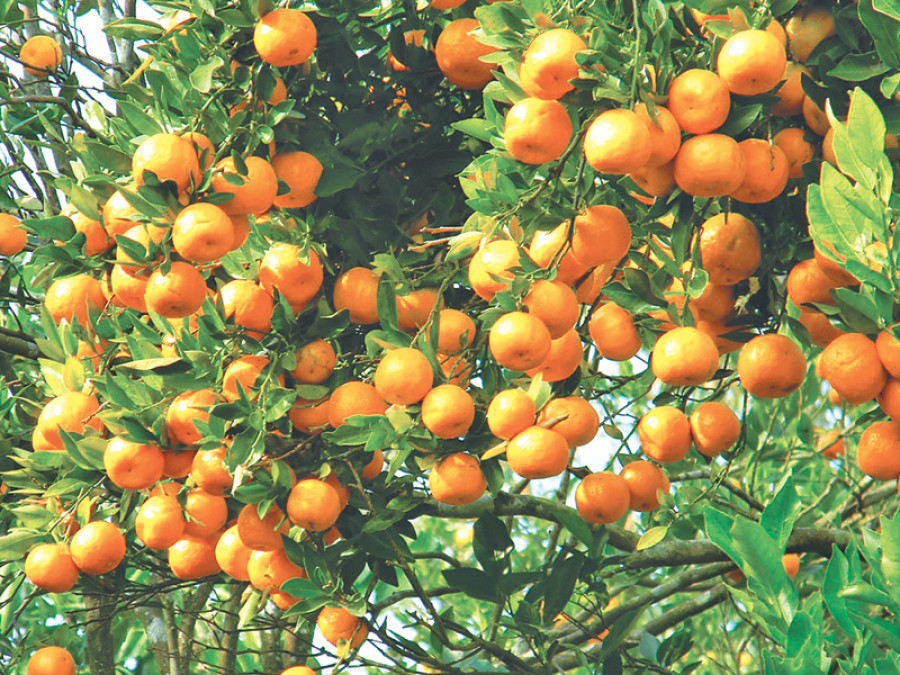Money
Diseases wiping out orange crop in Pokhara
There were times when Chandra Poudel of Lekhnath, Kaski, used to earn around half a million rupees annually by selling oranges produced in his orchard.
Lal Prasad Sharma
There were times when Chandra Poudel of Lekhnath, Kaski, used to earn around half a million rupees annually by selling oranges produced in his orchard. Last year, the sales decreased to Rs45,000, while the income is nil this year. “A mystery disease hit my orchard and the production is nil,” he said. “Now, I am planning to cut down the entire orange trees.”
Poudel, who has a 10-ropani orange orchard, is now searching alternatives to the citrus fruit.
Shaligram Adhikari of same region, who has been in the business for the past two decades, is also on the verge of quitting it. “Previously there was regular income and there was enthusiasm,” he said. “Now, I am confused over my future.”
Of late, diseases like “citrus greening” and “root decaying” have hit orange orchards in the region, forcing farmers to quit their profession. According to the District Agriculture Office, “citrus greening” has been the most destructive of the diseases.
Especially, pocket areas for orange production like Hansapur, Thumki, Rupakot, Kalika, Bharatpokhari, Nirmalpokhari, Pumdivhumi and Salyan are the hardest hit.
“Almost all orchards have been hit hard by citrus greening,” said Dharma Raj Neupane, president of the District Orange Producer Association, who also owns 30 ropanies of orange plantation. “Even large orchards set up with huge investments are empty and we are considering switching our job.”
Earlier, Neupane used to earn more than half a million rupees annually and he had even been planning to boost investment. “Unfortunately, last year’s total sale was just Rs250,000 which is expected to further decrease to Rs150,000 this year,” said Neupane. “We do not have any option, but to quit the business entirely.”
According Ajay Adhikari, an official of the District Agriculture Office, various factors like low quality sapling, lack of irrigation and nutrition and improper management of sapling and trees are the reasons behind the epidemic.
“Apart from citrus greening, a pathogen named ‘citrus silla’ is also destructing orange orchards,” said Adhikari. “Earlier, this pathogen was not seen above the altitude of 1,000 metres. However, we have traced it at 1,200 metres now.”
The epidemic started due to the plantation of infected sapling, he said.
“Now, we have to destroy all the infected trees and treat the soil to eliminate the disease,” he said. “This is the only alternative we have now.”




 27.12°C Kathmandu
27.12°C Kathmandu.jpg)














